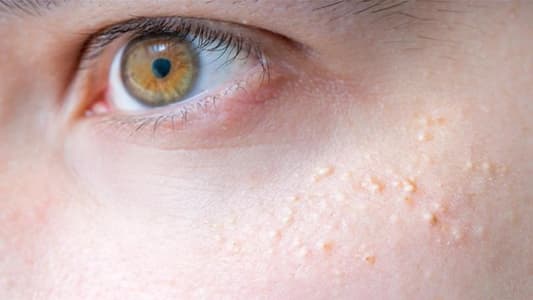What are milia?
Milia are small, white bumps that appear on the skin. They’re caused by keratin that’s trapped underneath the surface of the skin. Unlike whiteheads, which contain pus, milia aren’t a sign of clogged pores.
Newborn babies often develop milia. They’re common in older children, too. Adults sometimes develop milia, especially on the cheeks or under the eyes.
While milia aren’t a cause for concern, you may want to remove them. Keep reading to find out what you can do to treat milia under the eyes.
Home remedies to remove milia under the eyes
Generally, there’s no treatment necessary for milia. They’ll clear up on their own. But if the milia under your eyes bother you, here are some home remedies you can try:
Clean and exfoliate the skin. Milia occur under the eyes due to an excess of keratin. Gently exfoliating the area with a warm washcloth may get rid of dead skin cells and help bring trapped keratin to the surface.
Steam. Spending some time in your bathroom with the door closed and a hot shower running creates an easy at-home steam treatment for your face.
Rose water or manuka honey. Spritz a bit of rose water or use a manuka honey mask on your face. Research has found anti-inflammatory properties in rosesTrusted Source and honey.
Avoid picking or poking. It may seem counterintuitive, but leaving milia bumps alone helps them heal faster. If you pick milia bumps to the point where they become irritated, infection and scarring become more likely.
Products to try
You can purchase over-the-counter products to treat milia under your eyes. Read the label and make sure the product is safe to use under your eyes. Because this area is very sensitive, you may need to look for products that are specifically made and marketed for under the eyes.
Topical alpha hydroxy acids, like glycolic acid and lactic acid, can be used to promote healthy skin. You can find these ingredients in:
- astringents
- face toners
- masks
- skin peels
Salicylic acid treatments slowly peel away dead skin cells. This may help release keratin that’s trapped between skin layers. You can find salicylic acid in exfoliating creams and cleansers.
Over-the-counter retinoid ingredients, like adapalene and retinol, encourage cell turnover and reduce the “stickiness” of cells in your pores. These ingredients help bring old cells and trapped toxins to the surface of your skin.
Medical treatments to remove milia under the eyes
A dermatologist may be able to remove milia from under your eyes using one of the following procedures:
Deroofing. A sterilized needle carefully removes the milia from under your eyes.
Cryotherapy. Liquid nitrogen freezes the milia, destroying them. Cryotherapy is the most frequently recommended way to get rid of milia. However, it isn’t always recommended for the area close to your eyes. Discuss with your doctor if this treatment is right for you.
Laser ablation. A small laser focuses on the milia to open the cysts and get rid of keratin buildup underneath the skin.
How long do milia take to clear up?
Milia in children tend to clear up within a few weeks. They can take up to a few months to heal in adults, depending on the underlying cause.
Can I use makeup over milia?
You may wish to cover the bumps with foundation or concealer. If you do choose to use makeup, choose products that are hypoallergenic and won’t clog your pores.
Covering milia with a heavy layer of makeup keeps your skin from going through its natural process of shedding skin cells. Clogged pores can further trap keratin beneath your skin. A light, powder-based makeup under your eyes may be the best way to make the milia less noticeable.
How to prevent milia under the eyes
If you keep getting milia under your eyes, consider changing your skin care routine. Here are some tips:
Regularly clean, exfoliate, and moisturize your skin
While too much exfoliation can irritate your skin, a little bit of gentle exfoliation under your eyes will encourage new skin cells to come to the surface and loosen trapped keratin. If you’re prone to milia, oil-free soaps and cleansers are your best choice.
Use a serum
Consider purchasing a night serum that contains vitamin E or topical vitamin A (retinal) and is approved for use under the eyes. As you age, your body naturally loses some of its ability to exfoliate dry skin. Serums can lock in moisture and promote cell growth while you sleep.
Try oral supplements
Make sure you’re getting enough of the vitamins that give your skin a healthy glow. If you’re worried that you aren’t getting enough vitamins through your diet, there are oral supplements you can take:
- vitamin E
- vitamin B-3 (niacin)
- B-complex vitamins
Keep in mind that the U.S. Food and Drug Administration doesn’t monitor or regulate supplements like they do for drugs. It’s important you talk to your doctor before trying supplements. Some may interfere with medications you’re currently taking.
The takeaway
Milia may be bothersome to you, but remember they’re not permanent.
In some cases, recurring milia may be a symptom of another skin condition, like dandruff or rosacea. Speak to your doctor about any concerns you have about recurring milia under your eyes. They can help find the right treatment for you.






TWEET YOUR COMMENT